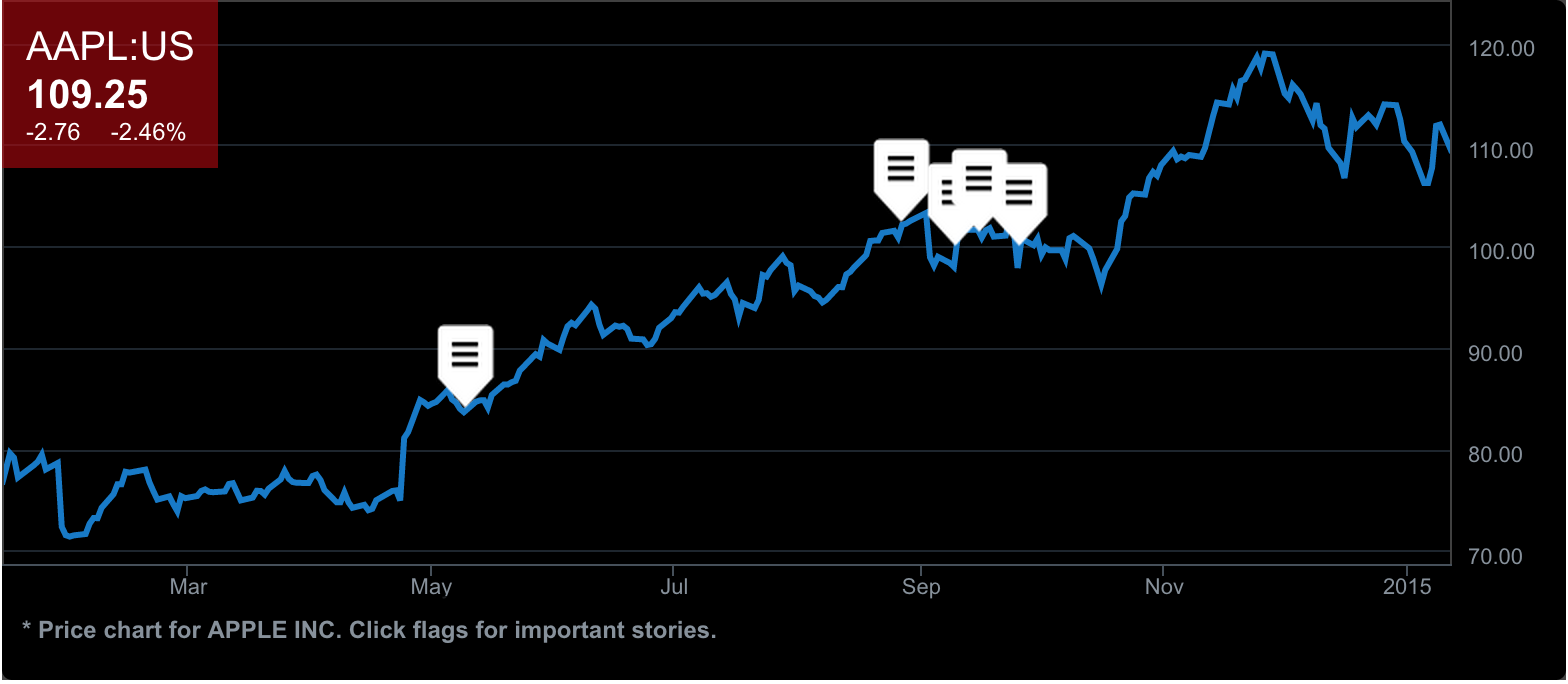Apple Inc. (AAPL) changed the prices of software applications from Canada to Europe last week, in one of the company’s broadest global responses to currency fluctuations in recent years.
All major currencies have declined against the U.S. dollar in the past 12 months, with the U.S. economy on an upswing. The Canadian dollar is down about 10.1 percent since July and Jan. 9 touched its lowest level versus the U.S. dollar in 5 1/2 years. The euro has declined about 13 percent against the dollar in six months, according to data compiled by Bloomberg.
“They’re clearly reading the tea leaves, in terms of oil prices and the relative strength of the U.S. economy and weakness elsewhere, and saying the strength of the dollar is not just a transitional event,” Andrew Bartels, an analyst at Forrester Research Inc., said in an interview. “Without making these changes, Apple would be looking at a very significant impact on its revenue.”
As a result, last week Apple told developers selling apps through the App Store that it would increase prices in the European Union, Norway, Canada and Russia because of foreign exchange rates and taxes. Therefore, in Canada, entry-level prices for apps surged to $1.19 from 99 cents, and in Europe, the basic app price rose to 0.99 euro from 0.89 euro. Apple increased the price of the iPhone in Russia last month after online sales took a break for a short period when the value of the ruble dropped.
Nevertheless, it is not the first time it happens to Apple. The prices of the apps are categorized in tiers, and Apple adjusts them all over the world in local currencies. In the United States, the basic price for a paid app is 99 cents. In 2012 also the company took a similar approach by increasing app prices in Europe, and last year it changed its pricing in Asia. For Canada, this is the first such instance.
What will be the effect on iPhones?
Apple’s revenue from other products may also be roiled by the strong dollar. Sales of the iPhone, the company’s largest product by revenue, may have risen to 69.3 million units in the final quarter of 2014 from 51 million a year earlier, according to an estimate by UBS AG. The net average selling price was hurt by 2.8 percent because of the strengthening U.S. dollar, according to estimates by UBS analyst Steven Milunovich, though that was probably offset by other factors including a more expensive iPhone 6 Plus..

